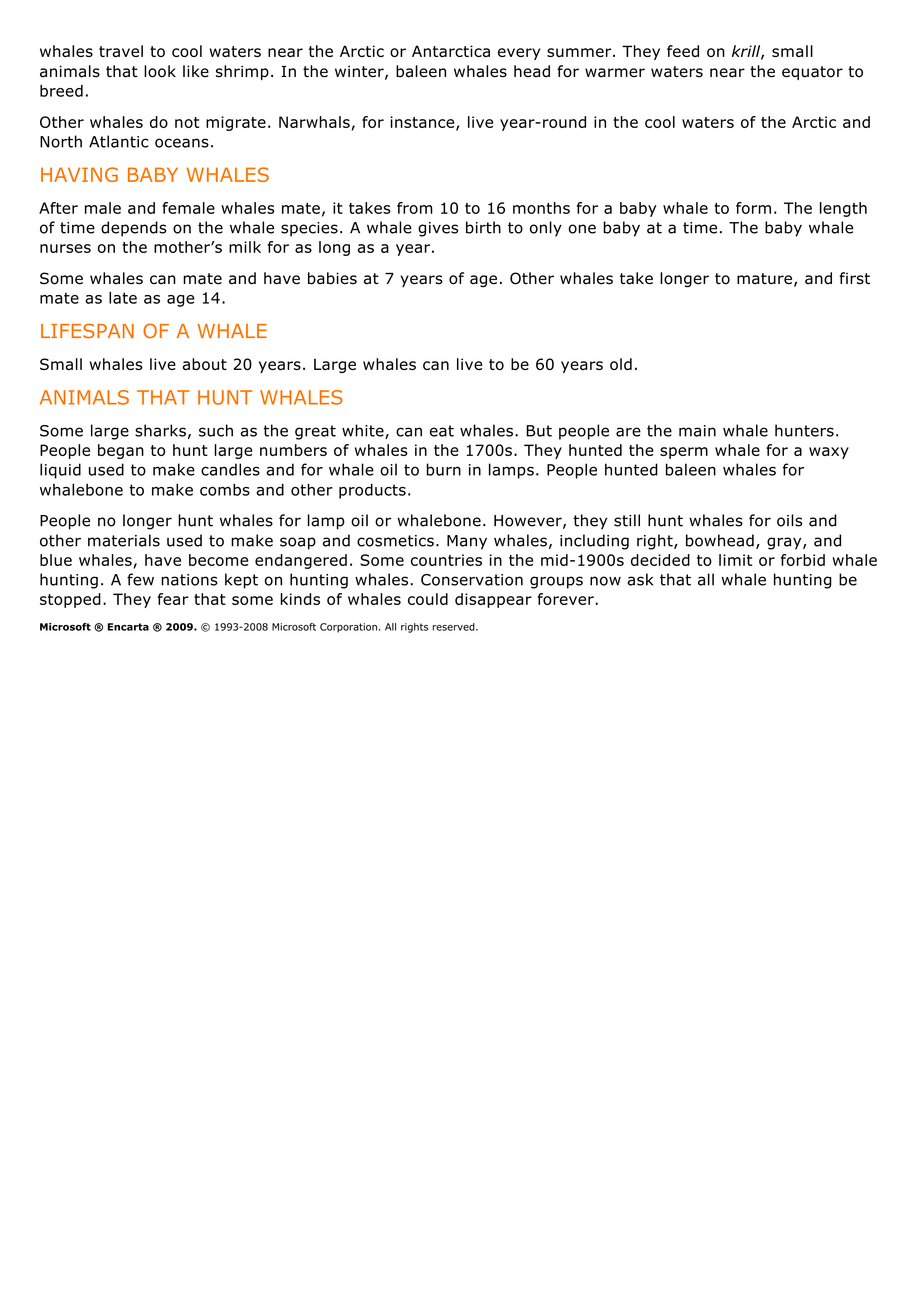Whales.
Publié le 15/05/2013

Extrait du document
«
whales travel to cool waters near the Arctic or Antarctica every summer.
They feed on krill , small animals that look like shrimp.
In the winter, baleen whales head for warmer waters near the equator tobreed.
Other whales do not migrate.
Narwhals, for instance, live year-round in the cool waters of the Arctic andNorth Atlantic oceans.
HAVING BABY WHALES
After male and female whales mate, it takes from 10 to 16 months for a baby whale to form.
The lengthof time depends on the whale species.
A whale gives birth to only one baby at a time.
The baby whalenurses on the mother’s milk for as long as a year.
Some whales can mate and have babies at 7 years of age.
Other whales take longer to mature, and firstmate as late as age 14.
LIFESPAN OF A WHALE
Small whales live about 20 years.
Large whales can live to be 60 years old.
ANIMALS THAT HUNT WHALES
Some large sharks, such as the great white, can eat whales.
But people are the main whale hunters.People began to hunt large numbers of whales in the 1700s.
They hunted the sperm whale for a waxyliquid used to make candles and for whale oil to burn in lamps.
People hunted baleen whales forwhalebone to make combs and other products.
People no longer hunt whales for lamp oil or whalebone.
However, they still hunt whales for oils andother materials used to make soap and cosmetics.
Many whales, including right, bowhead, gray, andblue whales, have become endangered.
Some countries in the mid-1900s decided to limit or forbid whalehunting.
A few nations kept on hunting whales.
Conservation groups now ask that all whale hunting bestopped.
They fear that some kinds of whales could disappear forever.
Microsoft ® Encarta ® 2009. © 1993-2008 Microsoft Corporation.
All rights reserved..
»
↓↓↓ APERÇU DU DOCUMENT ↓↓↓


